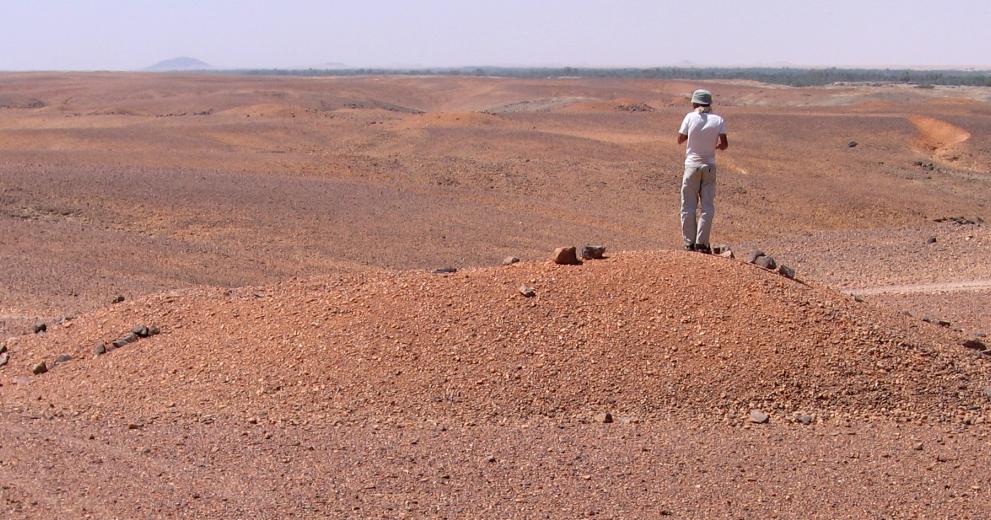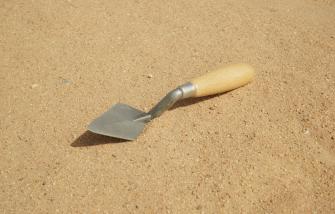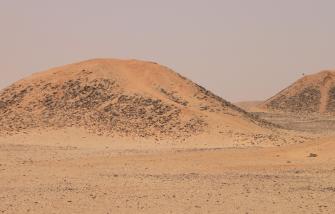Sai Island is situated between the Second and Third Nile Cataracts. It has a very long and rich occupational history, with sites of the Kerma, Pharaonic, medieval and Islamic periods. Read more ...

350 to 600 AD
Post-Meroitic period
In the fourth century AD, the Kingdom of Kush disintegrated. The royal cemetery and the capital at Meroe fell into disuse. Some traditions connected with the Meroitic elite, like writing and building monumental temples, ended. Other crafts, including iron production, continued. The use of the saqia waterwheel became more widespread, changing the patterns of agricultural production in the Middle Nile valley.
Political power was split into several smaller units with local centres. The rulers did not invest in palatial architecture, but continued to express their status in the funerary realm. They stopped building pyramids, returning instead to mound-shaped superstructures. With diameters up to 77 metres and heights up to 13 metres, some of their tombs rivalled the royal tumuli of the Kerma period in size. Cemeteries with such monumental graves were recorded in Ballana and Qustul north of the Second Cataract in Lower Nubia, in Zuma and Tanqasi in the vicinity of Jebel Barkal, and in al-Hobagi, 50 kilometres upstream of Meroe on the western bank of the Nile.
The lesser elites and the commoners were also buried in mound graves, which could still reach diameters of up to 20 metres. Hundreds of cemeteries attributed to this period line the desert edges on both banks of the Nile. They are the last testimonies of ancient Sudan, before the onset of Christianity.

